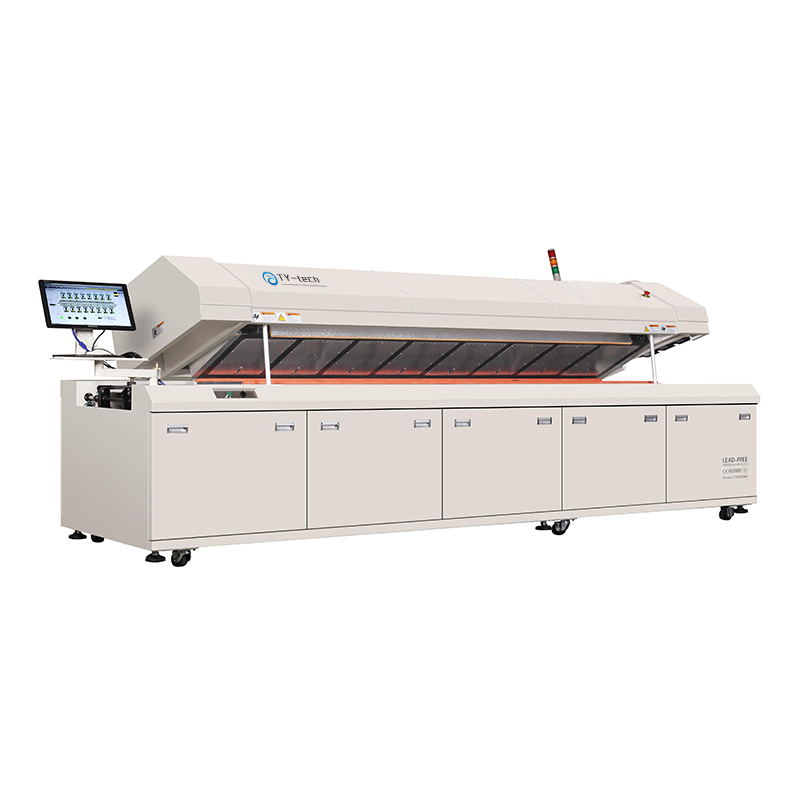Reflow soldering is a key step in the PCB assembly process, and controlling its quality is essential to ensure the performance of the entire PCB board. The following is a detailed analysis of how to control the quality of reflow soldering at each stage:
1. Reflow soldering solder paste infiltration stage
Control the temperature and time: Ensure that the temperature is maintained between 150℃ and 180℃ for 60 to 120s, so that the flux can fully volatilize and infiltrate the pads and component pins.
Moderate heating speed: Too fast heating speed may cause the flux to volatilize prematurely, affecting the infiltration effect. Generally, the heating speed is controlled at 0.3 to 0.5℃/s.
2. Reflow soldering circuit board preheating stage
Uniform heating: Ensure that all parts of the PCB board are heated evenly to avoid deformation caused by local overheating.
Control the heating speed: Too fast heating speed may cause uneven heating and deformation of the circuit board. Control the heating speed below 3℃/s, and the ideal is 2℃/s.
Moderate preheating time: The preheating time is controlled at 60 to 90s to ensure that the flux is fully activated and ready to enter the reflow stage.
3. Reflow stage
Control high temperature time: The time when the temperature is above 183℃ should be controlled within 60~90s to ensure that the solder paste is fully melted and infiltrates the component pins and pads.
Key point temperature control: The time control between 210℃ and 220℃ is particularly critical, and it is generally better to control it within 10~20s to avoid welding quality problems.
4. Cooling stage
Moderate cooling speed: Too fast cooling speed may cause cold deformation and stress concentration of the circuit board. Control the cooling speed below 4℃/s, and the ideal is 3℃/s.
Ensure the solidification of the solder joint: During the cooling process, ensure that the solder joint is fully solidified to avoid problems such as loose welding or cold welding.
In summary, controlling the quality of reflow soldering requires comprehensive consideration from multiple aspects, including temperature, time, heating/cooling speed, and PCB board design and equipment capabilities. In the actual production process, it is necessary to continuously study and explore, and strive to control various factors affecting welding so that welding can achieve the best effect.
Post time: Sep-09-2024





